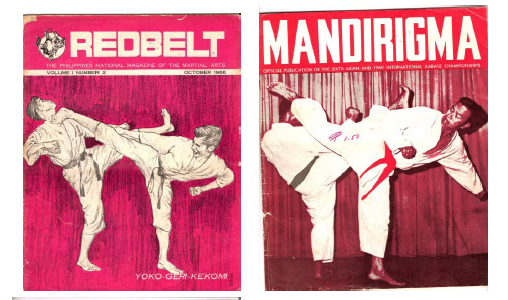Sikaran has a history that goes back before the coming of the Spaniards in 1521. However, it was not until 1958 when Meliton Geronimo started teaching the art to the public that it was transformed from a regional recreational physical activity of Baras, Rizal to a nationwide sport and fighting art.
The publication of several local magazines and Sikaran Instructor’s Manuals in the 1960’s and 1970’s further boosted the dissemination of Sikaran. At that period of Sikaran growth, the accepted generic term for all empty hand fighting arts was Karate.
Sikaran was referred to as Philippine Karate until 1972, when Meliton Geronimo dropped all references to Sikaran as Philippine Karate and formed the Pandaigdig Kapatiran Sikaran (World Sikaran Brotherhood).


Sikaranistas who immigrated to the west and the rest of the world brought with them their knowledge of the art and led to the progressive expansion of Sikaran.
Foreigners who found their way to the Philippines, on account of their job assignment, such as in the United States military and the various multi-national corporations further served as catalysts in the spread of Sikaran.
However, it was not until 1966 that Sikaran took wings. Sikaran was “formally introduced” to the international world of the martial arts through the pages of Black Belt Magazine, the world’s premier periodical dedicated to the fighting arts.
In 1965, Emmanuel Querubin of Sikaran Pilipinas (SIKAP) was appointed Black Belt Magazine Foreign Correspondent for the Philippines.
His first article was “SIKARAN – a Dying Art,” which appeared in the April 1966 issue. His next article entitled “It All Began 800 Years Ago” came out in June 1966.

These Sikaran articles served as the polypeptide hormone resulting in the explosive emergence of Sikaran clubs. Self proclaimed masters sprouted like wild mushroom and the term Sikaran spread like wildfire.
The Karate (Sikaran) Brotherhood of the Philippines became the largest sports association in terms of participation and membership in the country.
Unfortunately, the further Sikaran stretched its wings for flight, the greater the risk of corrupting, debauching, and raping the art, the techniques and the origin became.
In search of an easy payday, there are Sikaran practitioners, who after having been banished from the association, proclaimed themselves masters and grandmasters.
Then there are those who put together kicks and strikes and called their art Sikaran but cannot claim legitimate lineage to Sikaran.
Then there are name-droppers who allude to having learned under a legitimate Sikaran teacher by placing their names side by side.
Moreover, there are several associations, which practice Sikaran, and acknowledge Meliton Geronimo as the Sikaran Grandmaster but have broken away from the World Sikaran Brotherhood.
Nevertheless, the progressive expansion and evolution of Sikaran is unstoppable.
At last count the Pandaigdig Kapatirang Sikaran (World Sikaran Brotherhood) has affiliates all over the world with concentration in Hong Kong, Singapore, Malaysia, Australia, Canada, United States, Saudi Arabia, Dubai, Israel, Ireland, England and several other countries, not including the members in all the political and geographical regions of the Philippines.





















